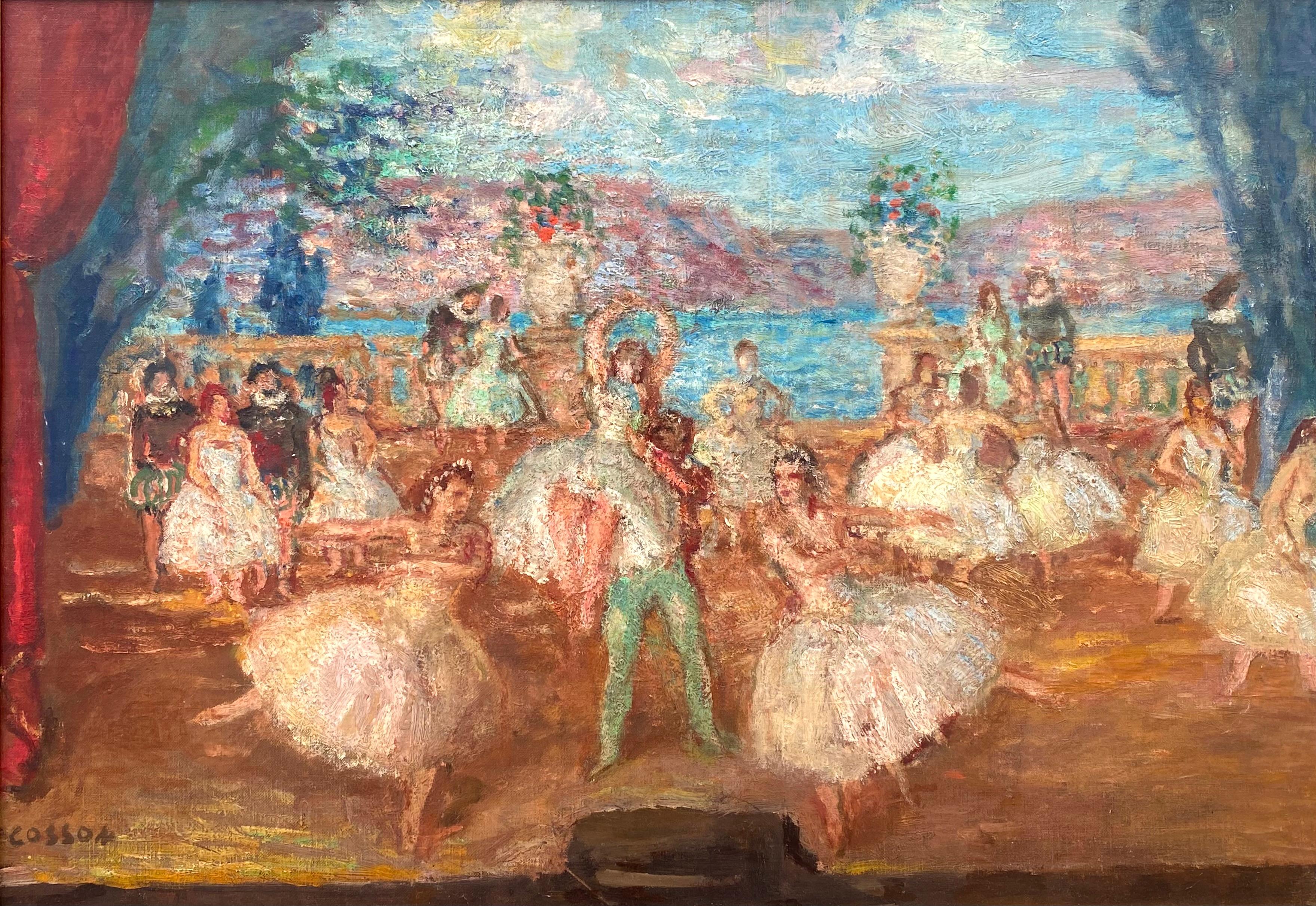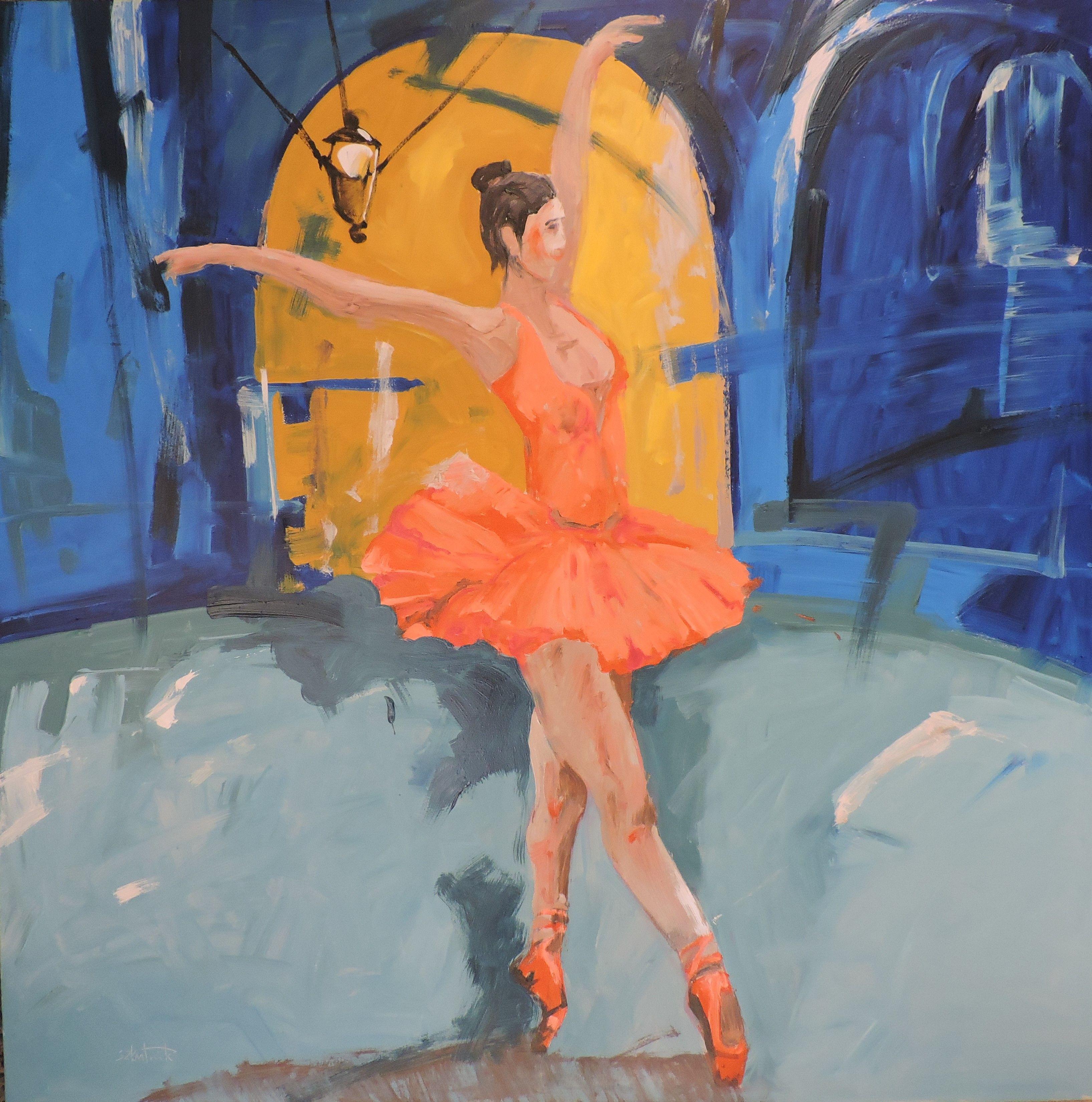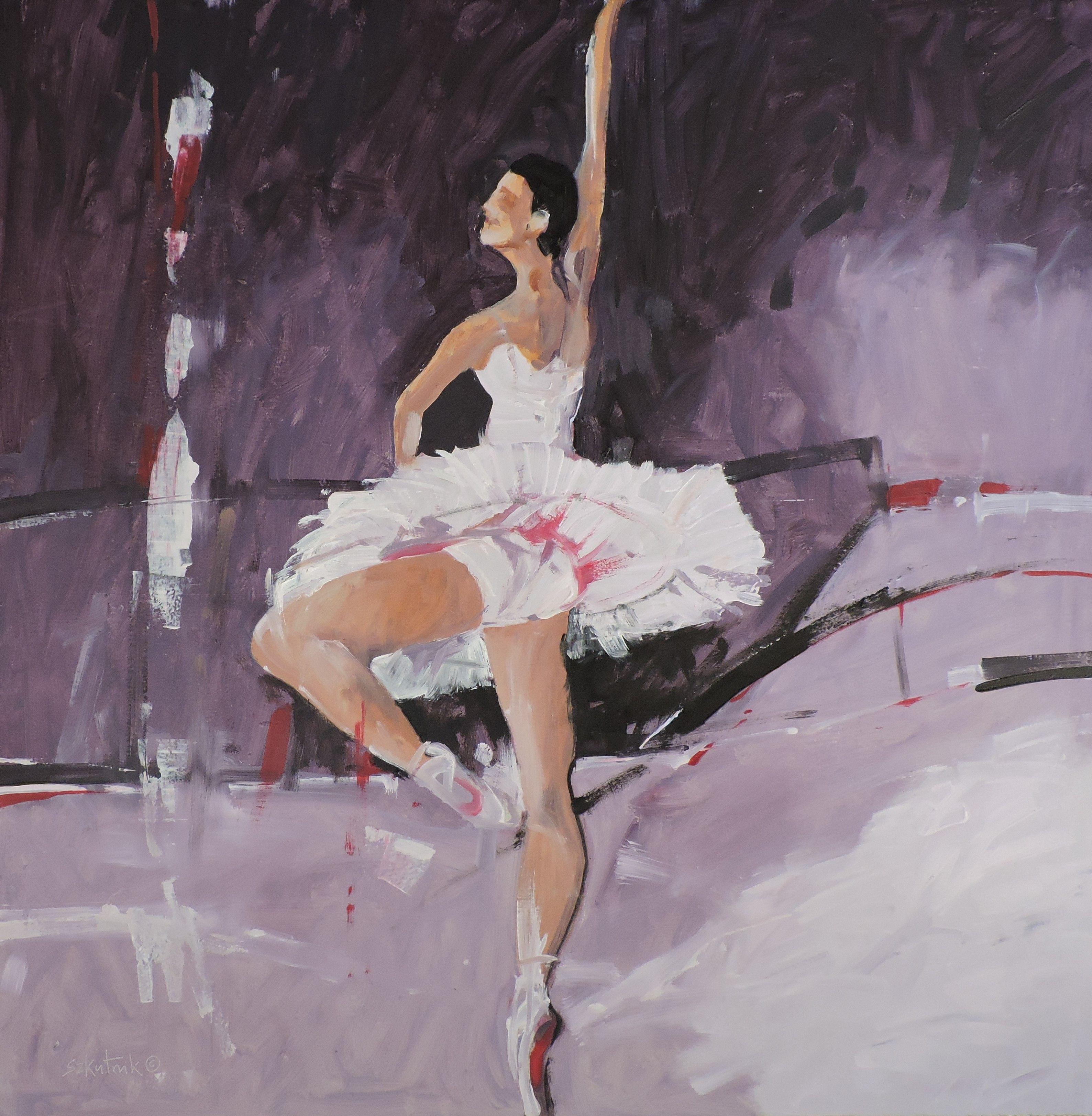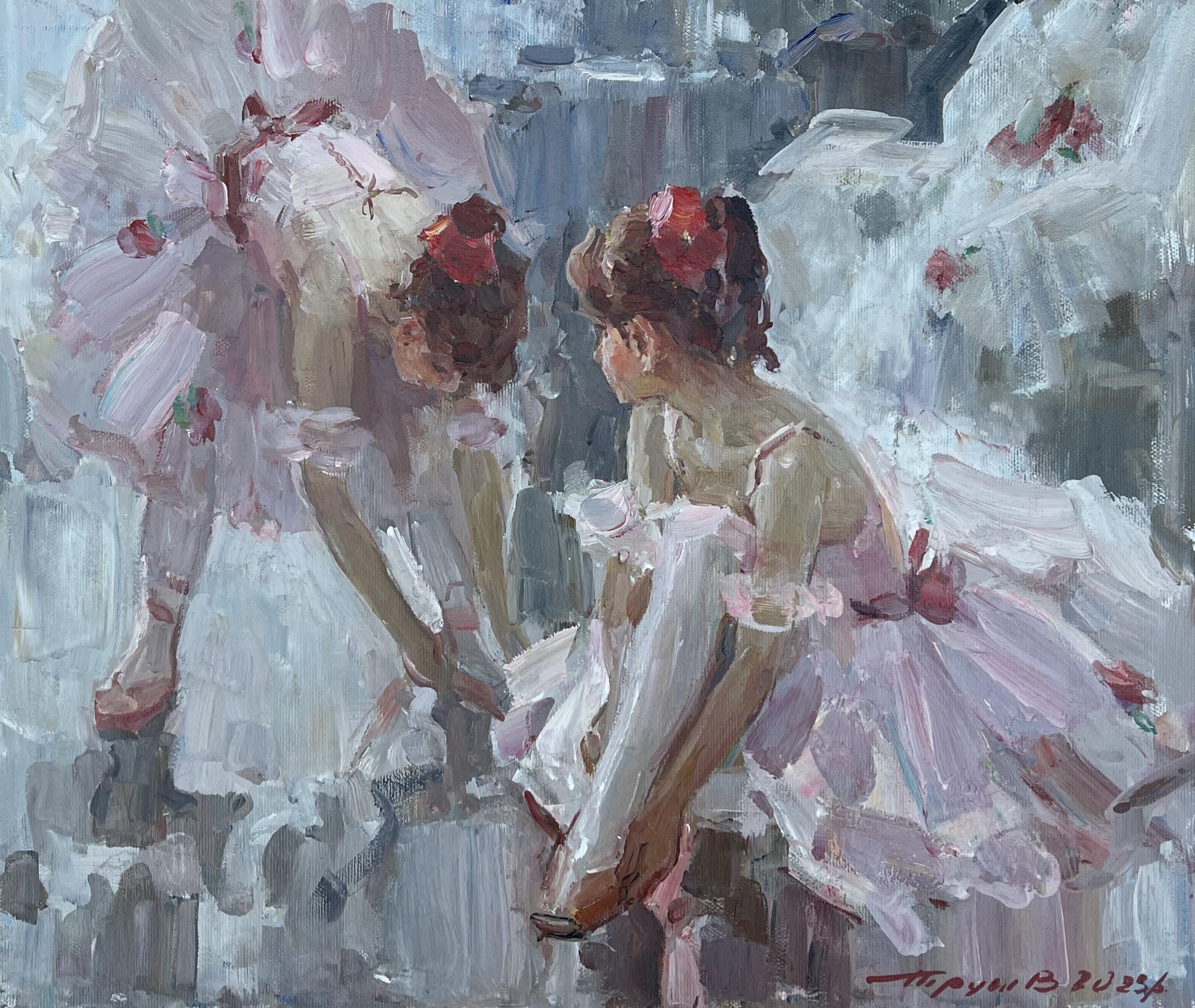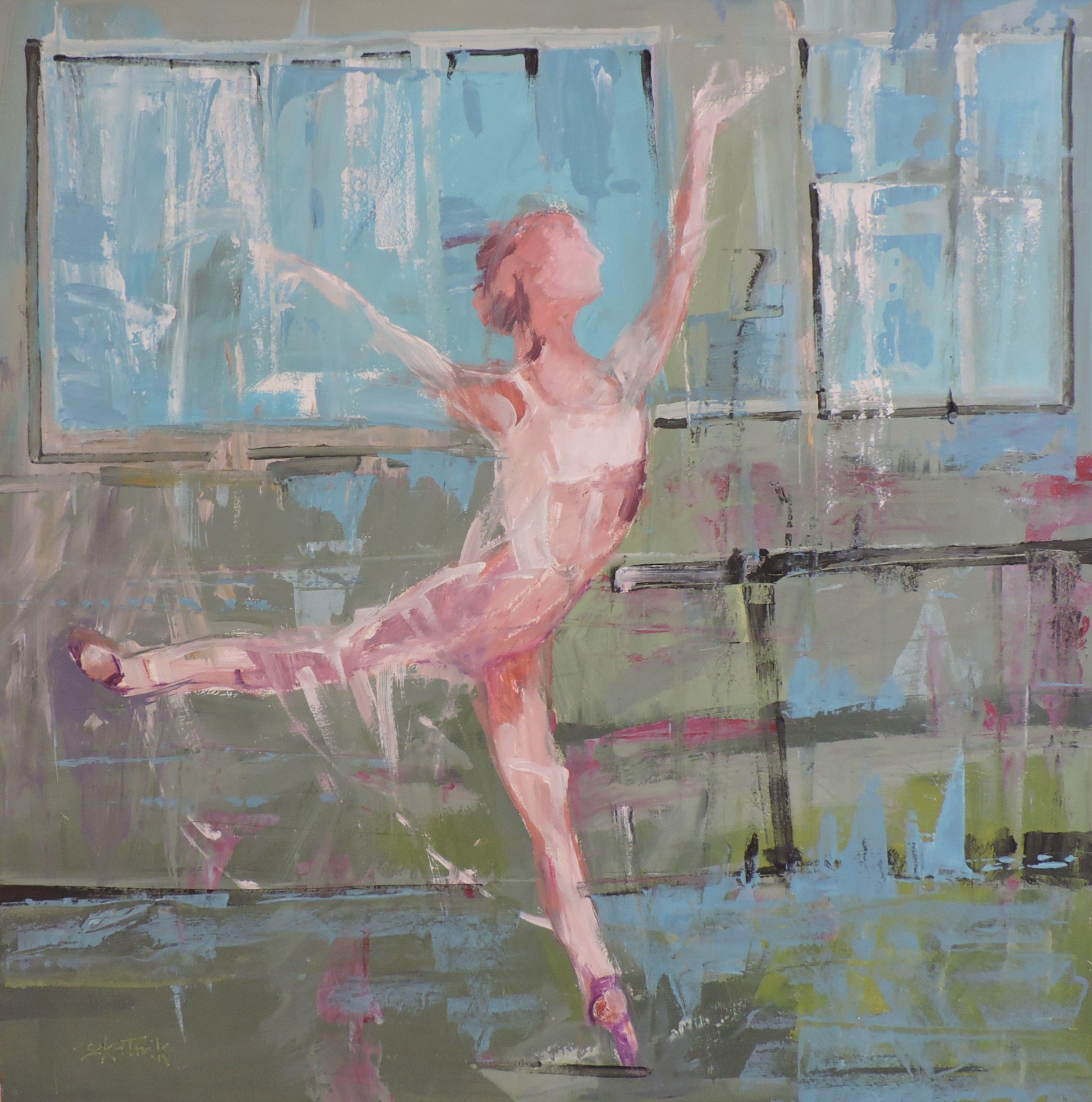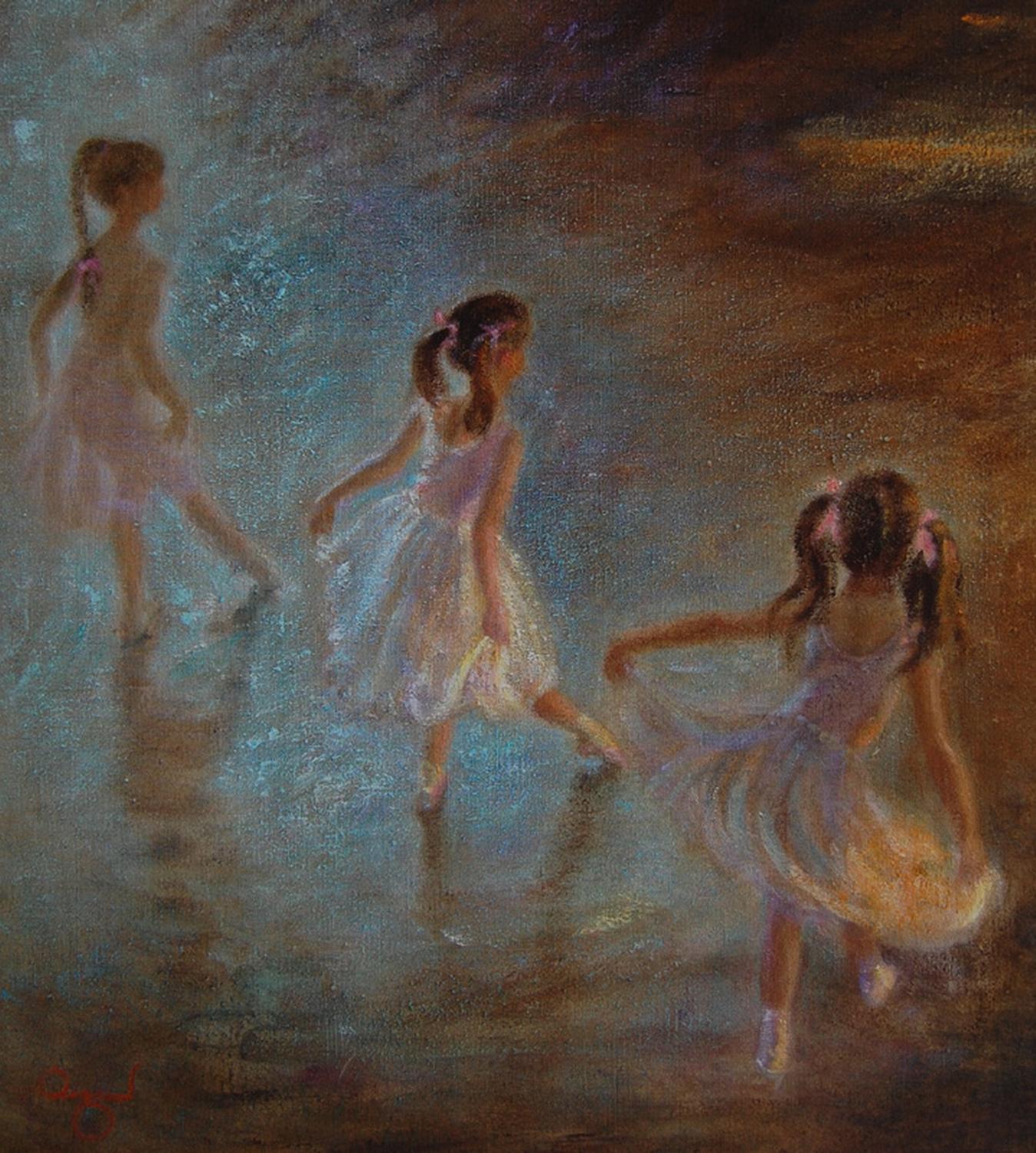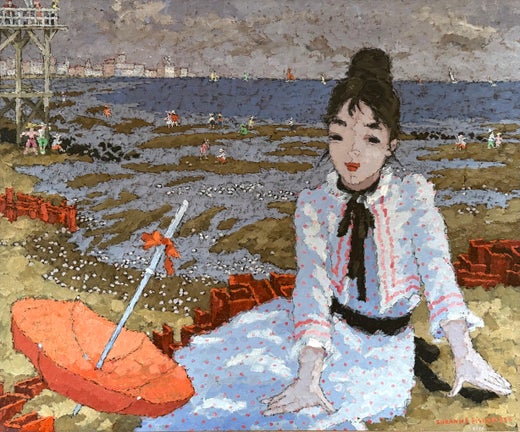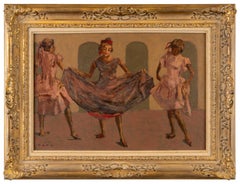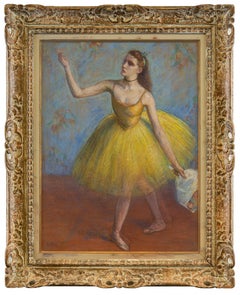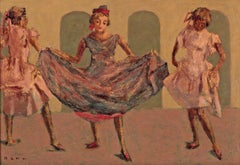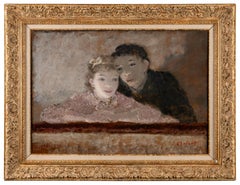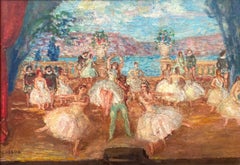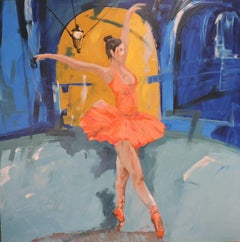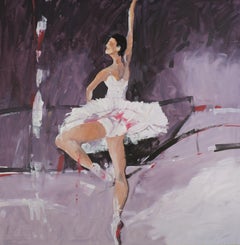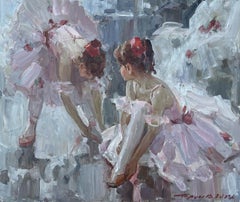Items Similar to Ballet D'enfants
Want more images or videos?
Request additional images or videos from the seller
1 of 8
Suzanne EisendieckBallet D'enfants
$15,000
£11,362.44
€13,109.09
CA$21,031.76
A$23,444.83
CHF 12,339.85
MX$284,216.95
NOK 157,109.41
SEK 146,073.71
DKK 97,843.47
About the Item
Suzanne Eisendieck
French, 1908-1998
Ballet D'enfants
Oil on canvas
36 by 29 ½ in. W/frame 44 by 37 ½ in.
Signed lower right
She was born in Danzig (now Gdansk, Poland) in 1908 where she went to study at the Academie des Beaux-Arts, later living in Berlin where she held her first exhibition. She came to Paris and began immediately to show her works which found a wide market because of their unique execution, coupled with a concept and a style always original and highly personal. Her impressionist style involves almost tremulous brushstrokes, diffusing the subject's contours.
She has long been famous for her depictions of the girl at a ball, a young woman strolling in the garden, or her children at the seashore. The whole world has come to recognize the identity of her characterizations which became tradition. Whether painting her favorite theme of mother and child in various settings, a landscape with figures, clowns, or flowers - she maintains a remarkable standard of creativity.
Her 'Monet' ladies continue in popularity and Suzanne Eisendieck and her late husband Dietz Edzard, the important impressionist who died in 1963, remain celebrated as two of the greatest exponents of that part of the School of Paris capturing the ultimate in French glamour. She had lived in Paris on the Left Bank in a large apartment hung with impressionist paintings which reflect her own taste and her great success.
Suzanne Eisendieck is recorded in E. Benezit, "Dictionnaire des Peintres, Sculpteurs, Dessinateurs, et Graveurs," which notes that she has been exhibiting in Paris since 1929 at the Salon des Independants. She died in 1988.
Provenance:
Waddington's Auction, 12/08/2009 Lot 231: Sales Price: $17,050
Private Collection, Palm Beach, Florida
Ann Norton Sculpture Gardens, West Palm Beach, Florida.
Art E111
- Creator:Suzanne Eisendieck (1906 - 1998, German)
- Dimensions:Height: 44 in (111.76 cm)Width: 37 in (93.98 cm)Depth: 3 in (7.62 cm)
- Medium:
- Movement & Style:
- Period:
- Condition:
- Gallery Location:Sheffield, MA
- Reference Number:Seller: Art E1111stDibs: LU70036132282
Suzanne Eisendieck
Suzanne Eisendieck was born in Danzig, Germany, on November 14, 1906. She exhibited at the Salon des Indépendants in 1929. After studying at the Académie des Beaux-Arts, she participated in two successful exhibitions in Berlin. She moved to Paris in 1932, where she met the artist Dietz Edzard, whom she married in 1938. Eisendieck had her first solo exhibition at Galerie Zak in Paris in 1932. She also had successful exhibitions of her Impressionistic works in London, Dominion Gallery in Montreal, New York City and Cologne, as well as joint exhibitions with her husband in Los Angeles, London, New York City, Chicago and Palm Beach. Eisendieck died in Paris on June 15, 1998.
About the Seller
4.3
Vetted Professional Seller
Every seller passes strict standards for authenticity and reliability
1stDibs seller since 2017
55 sales on 1stDibs
Typical response time: 12 hours
- ShippingRetrieving quote...Shipping from: Sheffield, MA
- Return Policy
Authenticity Guarantee
In the unlikely event there’s an issue with an item’s authenticity, contact us within 1 year for a full refund. DetailsMoney-Back Guarantee
If your item is not as described, is damaged in transit, or does not arrive, contact us within 7 days for a full refund. Details24-Hour Cancellation
You have a 24-hour grace period in which to reconsider your purchase, with no questions asked.Vetted Professional Sellers
Our world-class sellers must adhere to strict standards for service and quality, maintaining the integrity of our listings.Price-Match Guarantee
If you find that a seller listed the same item for a lower price elsewhere, we’ll match it.Trusted Global Delivery
Our best-in-class carrier network provides specialized shipping options worldwide, including custom delivery.More From This Seller
View AllDancing Girls
By Ben Benn
Located in Sheffield, MA
Ben Benn
American, 1884-1983
Dancing Girls
Oil on board
14 ½ by 21 in, w/ frame 21 ½ by 28 in
Studied:
The Art Student League in NYC; National Academy of Design, 1904-1908.
Membe...
Category
Mid-20th Century Impressionist Paintings
Materials
Oil
$6,600
La Premiere Danseuse
By Louis Kronberg
Located in Sheffield, MA
Louis Kronberg
American, 1872-1965
La Premiere Danseuse
Pastel on board
18 by 24 in, w/ frame 25 ½ by 31 ½ in
Signed lower left
Louis Kronberg, a popular portraitist of the early 2...
Category
Mid-20th Century Impressionist Portrait Paintings
Materials
Pastel
Dancing Girls
Located in Sheffield, MA
Bencion (Benn) Rabinowitch
Poland 1905 - Paris 1989
Dancing Girls
Oil on Board
14 ½ in. by 21 in. W/frame 21 ½ in. by 28 in.
He came from a rabbinic family, his father was an ar...
Category
1930s Post-Impressionist Figurative Paintings
Materials
Oil
Les Enfants Du Paradis
By Dietz Edzard
Located in Sheffield, MA
Dietz Edzard
German, 1893-1963
Les Enfants Du Paradis
Oil on board
23 ¾ by 33 ¼, w/ frame 32 ½ by 42 ¼ in
Signed lower right
Dietz Edzard was born in Bremen in 1893 Germany. He tra...
Category
Early 20th Century Expressionist Paintings
Materials
Oil
Au Circus
By Dietz Edzard
Located in Sheffield, MA
Dietz Edzard
German, 1893-1963
Au Circus
Oil on canvas
22 by 31 in. W/frame 32 by 41 in.
Signed lower right
Dietz Edzard was born in Bremen in 1893 Germany. He traveled extensive...
Category
1930s Post-Impressionist Figurative Paintings
Materials
Oil
Danseuse
Located in Sheffield, MA
Jules Marie Auguste Leroux
French, 1871-1954
Danseuse
Oil on canvas
19 ¾ by 24 ⅛ in, w/ frame 27 ¾ by 32 ⅛ in
Signed lower left
Leroux rec...
Category
Early 20th Century Impressionist Portrait Paintings
Materials
Oil
You May Also Like
“The Ballet Performance”
By Jean-Louis-Marcel Cosson
Located in Southampton, NY
Exquisite, original oil on canvas painting of a ballet performance by the well known French artist, Jean-Louis-Marcel Cosson. Signed by the artist lower left. Condition is very good. Old wax reline. Solid mahogany wood frame with gold decoration. Overall framed measurements are 24.75 by 33.25 inches.
Jean-Louis-Marcel Cosson was born in 1878 in Bordeaux. His first exhibition was in Paris at the Salon des Artistes Français, of which he would later become a member. He received an honourable mention at the age of 23 in 1901, and a third-place medal in 1911. He also exhibited at the Société des Beaux Arts and the Salon des Tuileries.
Cosson is a post-impressionist artist who developed a very distinctive style which makes him immediately recognisable among his peers. His passion was to capture a bustling Paris which was the epicentre of the Modern art world at the beginning of the twentieth century.
Fascinated by Edgar Degas, he almost invariably followed the themes beloved by the Impressionist Master, such as Parisian women or horse racing. But like for Degas, his most admired works remain his paintings of...
Category
1920s Impressionist Figurative Paintings
Materials
Canvas, Oil
$4,800 Sale Price
26% Off
Ballet V, Painting, Oil on Wood Panel
By Richard Szkutnik
Located in Yardley, PA
original oil on panel paint in contemporary impressionism style :: Painting :: Impressionist :: This piece comes with an official certificate of authenticity signed by the artist :: ...
Category
2010s Impressionist Paintings
Materials
Oil
ballet II, Painting, Oil on Wood Panel
By Richard Szkutnik
Located in Yardley, PA
original contemporary impressionistic oil on panel :: Painting :: Impressionist :: This piece comes with an official certificate of authenticity signed by the artist :: Ready to ...
Category
2010s Impressionist Paintings
Materials
Oil
Les Jeunes danseurs- The Young dancers
By Vladimir Trush
Located in Naples, Florida
Les Jeunes danseurs- The Young dancers
Category
21st Century and Contemporary Portrait Paintings
Materials
Oil
Ballet III, Painting, Oil on Wood Panel
By Richard Szkutnik
Located in Yardley, PA
3rd original oil painting from the series Ballet :: Painting :: Impressionist :: This piece comes with an official certificate of authenticity signed by the artist :: Ready to Hang:...
Category
2010s Impressionist Paintings
Materials
Oil
Contemporary Impressionist Figurative Oil Painting Dancers at the Ballet School
By Rene Jerome Legrand
Located in ludlow, GB
Contemporary Impressionist Figurative Oil Painting Dancers at the Ballet School.
More photographs available please ask!
Rene Jerome Legrand (British, Born...
Category
21st Century and Contemporary Impressionist Figurative Paintings
Materials
Oil
